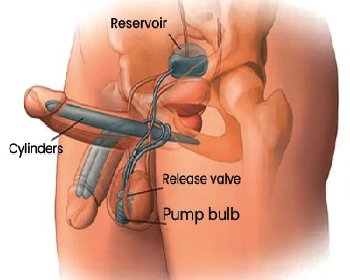
Penile lengthening, also known as phalloplasty, represents an advanced surgical approach to address concerns related to penile size, shape, and functionality. While societal perceptions and personal insecurities often influence the decision to pursue such surgery, phalloplasty is primarily designed to provide men with a physically and psychologically satisfying penile dimension, often coupled with improved sexual function and self-esteem.
The procedure is utilized not only for cosmetic enhancement but also for reconstructive purposes in cases of congenital micropenis, traumatic injury, or postoperative shortening following urological surgeries such as prostatectomy. With significant advances in microsurgical techniques, anesthesia, and postoperative care, penile lengthening surgeries have become more sophisticated, offering natural-looking, durable, and functionally effective outcomes.
This comprehensive article details the underlying causes and risk factors driving men to consider penile lengthening, the clinical presentation and evaluation process, the spectrum of available treatment options—including surgical and non-surgical modalities—prevention and postoperative management strategies, potential complications, and strategies for optimizing life and function after surgery.
Underlying Causes Necessitating Penile Lengthening
-
Congenital Micropenis: A rare developmental anomaly characterized by a penile length significantly below the population mean, often requiring surgical intervention for functional and aesthetic normalization.
-
Trauma or Injury: Penile fractures, burns, or iatrogenic damage from prior surgeries can result in scar contractures and shortening.
-
Post-Prostatectomy or Penile Implant Complications: Surgical treatments for prostate cancer or erectile dysfunction sometimes result in secondary penile shortening.
-
Age-Related Atrophy: Andropause and vascular insufficiency may contribute to loss of penile tissue volume and length.
-
Psychological Perception: Men with normal anatomical dimensions may still perceive their penis as inadequate, sometimes linked to body dysmorphic disorder.
Risk Factors Influencing Surgical Outcomes
-
Comorbid Medical Conditions: Diabetes mellitus, cardiovascular disease, and peripheral vascular disease impair wound healing and increase risk.
-
Smoking and Substance Use: Nicotine and recreational drug use compromise microcirculation, delaying recovery.
-
Previous Genital Surgeries: Scar tissue and altered anatomy increase surgical complexity.
-
Mental Health Status: Unrealistic expectations or untreated psychological disorders may affect postoperative satisfaction.
-
Anatomical Variations: Penile length, skin laxity, suspensory ligament configuration, and vascular anatomy influence procedural options and outcomes.
-
Objective Shortening: Measurable penile length below the standard norms, especially in stretched flaccid measurement.
-
Subjective Concerns: Feelings of inadequacy, dissatisfaction with penile size impacting self-confidence and sexual function.
-
Functional Impairments: Difficulty with penetration or condom fitting.
-
Physical Exam Findings: Retracted penis due to tight suspensory ligament, inadequate skin length, or fibrosis.
-
Associated Anatomical Abnormalities: Penile curvature, hypospadias, or Peyronie’s disease.
-
Psychosocial Distress: Avoidance of intimacy or sexual activities due to body image concerns.
Comprehensive Clinical Evaluation
-
Detailed sexual and medical history focusing on onset and duration of concerns, previous surgeries, comorbidities, and psychosocial impact.
-
Physical examination with flaccid stretched penile length measurement, assessment of skin quality, and suspensory ligament status.
-
Evaluation of erectile function using validated questionnaires and penile Doppler ultrasound if indicated.
-
Photographic documentation for surgical planning.
Imaging and Ancillary Testing
-
Penile Duplex Doppler Ultrasound assesses vascular integrity and erectile function.
-
MRI may be utilized in complex cases for soft tissue characterization.
-
Psychological evaluation to identify body dysmorphic disorders and set realistic expectations.
Surgical Techniques
-
Suspensory Ligament Release: Detachment of the ligament anchoring the penis to the pubic symphysis allows the penis to protrude further externally, increasing apparent length.
-
V-Y Skin Advancement Flap: Post ligament release, this technique advances suprapubic skin to prevent retraction and maintain exposure.
-
Skin Grafting or Flap Techniques: Used when penile skin is insufficient, often from donor sites such as the thigh or forearm.
-
Fat Grafting and Dermal Fillers: Adjunct procedures that can augment girth and subtly improve length.
-
Penile Implant Surgery: May be combined with lengthening procedures in patients with erectile dysfunction.
-
Complex Microsurgical Phalloplasty: For patients with congenital absence or severe penile loss, involves flap reconstruction (e.g., radial forearm free flap).
Non-Surgical Modalities
-
Penile Traction Devices: Mechanical stretching over months can induce tissue remodeling, producing modest length gains.
-
Vacuum Erection Devices: Primarily improve erectile function; no permanent lengthening effect.
-
Psychosexual Counseling: Essential for managing body image and expectation.
Prevention Strategies
-
Maintenance of vascular health through healthy lifestyle, exercise, and avoidance of smoking.
-
Early treatment of penile trauma or infections.
-
Psychological support for men concerned about body image.
Preoperative Optimization
-
Multidisciplinary evaluation including urology, plastic surgery, and psychology.
-
Medical management of comorbidities.
-
Patient education regarding surgical procedure, potential risks, and realistic outcomes.
Postoperative Management
-
Careful wound care and hygiene.
-
Use of penile traction devices as prescribed to maintain length.
-
Abstinence from sexual activity for recommended period.
-
Follow-up assessments for erectile function, sensation, and cosmetic outcomes.
Common Minor Complications
-
Postoperative edema and bruising.
-
Temporary hypoesthesia or altered sensation.
-
Mild discomfort or pain.
Serious Complications
-
Infection requiring antibiotics or surgical intervention.
-
Hematoma or seroma formation.
-
Penile instability or curvature abnormalities.
-
Erectile dysfunction.
-
Scar contracture limiting length gain.
-
Graft or flap necrosis in complex cases.
Mitigation
-
Adherence to sterile technique.
-
Patient compliance with postoperative protocols.
-
Early recognition and treatment of complications.
Recovery Timeline
-
Initial recovery includes swelling and discomfort for 2-4 weeks.
-
Progressive return of sensation and function over 3-6 months.
-
Final cosmetic and functional results typically achieved by 6-12 months.
Psychological and Functional Impact
-
Improved sexual confidence and self-esteem.
-
Enhanced relationship satisfaction.
-
Potential ongoing need for maintenance with traction or counseling.
Long-Term Care
-
Healthy lifestyle for vascular health.
-
Regular follow-up with treating physician.
-
Awareness and prompt management of any late complications.
1. What is penile lengthening (phalloplasty)?
Penile lengthening, or phalloplasty, is a surgical procedure aimed at increasing the length and sometimes girth of the penis for cosmetic or functional reasons.
2. Who is a good candidate for penile lengthening surgery?
Good candidates are men who are dissatisfied with their penile size, have realistic expectations, and are in good overall health without significant medical conditions.
3. How is penile lengthening performed?
The surgery often involves releasing the suspensory ligament of the penis to allow more length to be visible externally, sometimes combined with grafts or fat injections to increase girth.
4. Is the surgery painful?
The procedure is performed under general or local anesthesia. Post-operative pain is managed with medication and usually subsides within a few days.
5. What is the recovery time after surgery?
Initial healing takes about 2-4 weeks, with restrictions on sexual activity for at least 6 weeks to allow proper healing.
6. Are the results permanent?
Length gained through ligament release is typically permanent, though careful adherence to post-op care is necessary to maintain results.
7. What are the risks and complications?
Risks include infection, scarring, loss of sensation, erectile dysfunction, and dissatisfaction with cosmetic outcomes. Choosing an experienced surgeon is critical.
8. Will the surgery affect sexual function?
When performed correctly, sexual function is usually preserved or improved, but there is a risk of complications affecting sensitivity or erections.
9. How long does the surgery take?
The procedure usually lasts between 1 to 3 hours depending on the techniques used.
10. How should I prepare for penile lengthening surgery?
Preparation includes medical evaluation, stopping smoking, avoiding blood-thinning medications, and following your surgeon’s specific instructions.
The other Cosmetic Procedures are:
Few Popular Hospitals for Penile Lengthening (Phalloplasty) are:
Thailand, Malaysia, Singapore, Turkey and India are the most cost effective locations that offer up to almost 80% savings in comparison to the US.
SurgeryPlanet facilitates a plethora of services to the medical treatment traveler also which includes, a hassle free and discounted travel option, a welcome hand at the airport on arrival, travel in an air-conditioned car, round the clock service & support. Your medical evaluation is pre arranged with the least of waiting time. Once your assessment is complete and found medically fit, the procedure is immediately scheduled without a waiting period. Please read through our Services and Testimonials to understand and select your best options.
Major Treatments Abroad: Obesity / Bariatric Surgery | Spine Surgery | Stem Cell therapy | Fertility treatment | Knee replacement in India and Thailand | Heart Surgery | Organ transplant | Ayurveda Treatment | Heart valve replacement | Hip resurfacing | Hospitals in India and Thailand for Laparoscopic Sterilization| Best hospitals in Asia | JCI & ISO certified Hospitals | Cost effective medical procedures | Healthcare tourism | Complete privacy for affordable cost | Weight loss procedures | Infertility treatment | Board certified physicians | Low cost surgeries
SurgeryPlanet is an Healthcare Facilitator and not a Medical service provider. The information provided in this website is not to be used for diagnosis or treatment of any medical condition or use for any medical purposes. We provide information solely for medical travel facilitation and do not endorse any particular health care provider, hospital, facility, destination or any healthcare service or treatment listed. We are not an agent for, or affiliated to any health care provider, or service listed in our website and is not responsible for health care services provided by them. Choice of hospital or doctor for your healthcare services is your independent decision. Consult your domestic licensed health care provider before seeking the services of any health care provider you learn about from our website.



